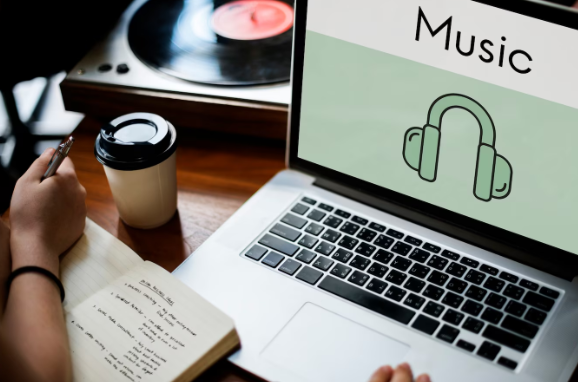In recent years, free AI music generators from text have made it easier than ever for anyone to create music, regardless of their musical background. Whether you’re a content creator, filmmaker, or simply a music enthusiast, these AI tools allow you to transform a text prompt into original, customizable music. But how do you actually use these platforms to generate music? In this guide, we’ll walk you through the steps to start using a free AI music generator from text.
What is a Free AI Music Generator from Text?
A free AI music generator from text allows you to create original music simply by typing out a description of the type of track you want. These platforms use artificial intelligence and machine learning to understand your text and turn it into music compositions. You can describe things like genre, mood, instruments, tempo, and more. The AI then analyzes your input and generates a custom musical track based on those parameters.
Why Should You Use an AI Music Generator?
- No Musical Expertise Needed: You don’t need to know how to play an instrument or understand music theory to generate high-quality tracks.
- Speed and Efficiency: AI music generators can create a song in just a few minutes, saving you time compared to traditional music production.
- Cost-Effective: Many of these tools are free to use or offer free versions, which is perfect for those on a budget.
- Creative Flexibility: AI music generators allow you to experiment with different genres, moods, and styles without any limitations.
How to Use a Free AI Music Generator from Text
Using a Helps to Use a Free AI Music Generator from Text from text is straightforward. Let’s go over the process step-by-step:
Step 1: Choose a Free AI Music Generator Platform
There are several free AI music generators that allow you to create music from text. Here are a few popular platforms to check out:
- Amper Music: A versatile AI music tool that allows you to create music based on a set of parameters like genre, mood, and instruments.
- Boomy: A user-friendly platform where you can generate music quickly by selecting a genre and mood and then adjusting other parameters.
- Soundraw: This AI tool provides you with a variety of music styles and moods. After entering your text prompt, it generates a track that you can customize.
- Aiva: Aiva specializes in creating classical and cinematic music, making it perfect for film scores, game music, or any project needing orchestral compositions.
- JukeBox by OpenAI: A more advanced AI music generator that can create high-fidelity music, including vocals, based on a text description.
Step 2: Sign Up or Log In
Most free AI music generator platforms will require you to create an account before you can start generating music. Signing up usually involves entering your email address and creating a password. Some platforms may also offer social media sign-in options for quicker access.
Step 3: Provide Your Text Prompt
Once you’re logged in, you’ll typically be directed to a simple user interface where you can start entering your text prompt. This is where you describe the type of music you want the AI to create. Be as specific as possible for the best results.
- Be Clear with Your Descriptions: The more detailed your text prompt, the better the AI can understand what you’re looking for. For example, instead of saying “create a song,” try something like, “a relaxing acoustic guitar piece with a slow tempo and nature sounds in the background.”
- Experiment with Different Styles: Don’t be afraid to experiment with different genres, moods, and instrumentations. You can try things like “upbeat electronic track with synthesizers,” or “dark orchestral score with dramatic strings and horns.”
Step 4: Adjust Parameters (if available)
After inputting your text prompt, many platforms allow you to adjust different parameters to further refine your music. These can include:
- Tempo: Control the speed of the track (fast, slow, moderate).
- Key: Choose a musical key (e.g., C major, A minor) that suits the mood of your composition.
- Instruments: Some platforms let you select specific instruments (e.g., guitar, piano, drums) or let the AI decide based on your prompt.
- Genre or Mood: Choose from a list of genres (pop, classical, jazz, etc.) or describe the mood (e.g., happy, sad, mysterious) you want the AI to capture.
Step 5: Generate the Music
Once you’ve inputted your text prompt and adjusted any available parameters, hit the “Generate” button. The AI will then process your request and create a custom track based on your description.
- Preview the Music: Most platforms will allow you to preview the generated music before you finalize your choice. Listen to the composition and make sure it aligns with your vision.
- Refine the Music: If you’re not satisfied with the result, you can often tweak the parameters or text prompt and try again. Many platforms also offer editing tools that let you change aspects like the length, tempo, or instrumentation of the track.
Step 6: Download and Use the Music
After you’re happy with the generated music, you can download it. Depending on the platform, the music may be offered in different file formats (e.g., MP3, WAV), and you can use it for your projects—whether it’s for a video, podcast, advertisement, or personal use.
- Royalty-Free: Many free AI music generators offer royalty-free music, meaning you can use it in commercial projects without worrying about licensing issues. However, make sure to check the platform’s terms and conditions to ensure the music can be used for commercial purposes.
Step 7: Use the Music in Your Projects
Once you’ve downloaded your track, you can start incorporating it into your project. Whether you’re adding background music to a YouTube video, creating a soundscape for a game, or using it as a soundtrack for a short film, the possibilities are endless.
Tips for Getting the Best Results
To maximize the quality of your AI-generated music, consider these tips:
- Be Specific: The more detailed your text prompt, the better the music will match your expectations. For example, instead of just saying “sad song,” try “slow, melancholic piano piece with soft strings and a gentle rhythm.”
- Experiment with Genres: Don’t hesitate to experiment with different genres, tempos, or instrumentation. AI tools can create music in various styles, so feel free to explore new sounds.
- Use the Editing Features: After generating the music, use any editing features available to tweak the track further. This might include adjusting the length, tempo, or the number of instruments used.
Conclusion
A free AI music generator from text offers a powerful, easy-to-use tool for creating original music without needing advanced musical skills. By following these simple steps, you can generate music tailored to your needs, whether for personal or professional projects. From selecting the right text prompt to adjusting parameters and downloading your final track, AI music generators provide an intuitive way to unleash your creativity and enhance your content.
So, whether you’re making a YouTube video, podcast, game, or simply experimenting with music, a free AI music generator from text is an excellent tool to have at your disposal. Why not give it a try and see what kind of music you can create with just a few lines of text?



